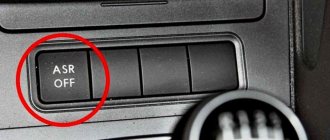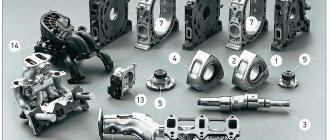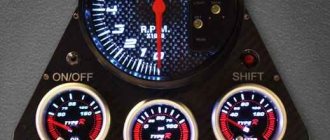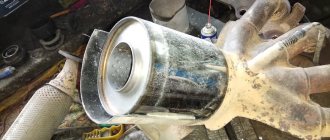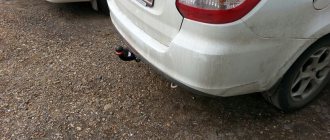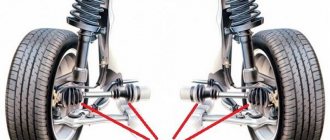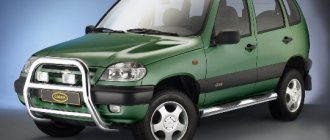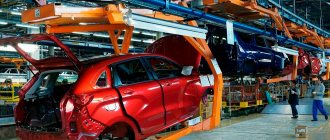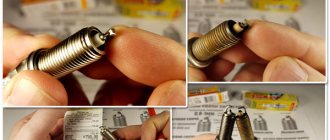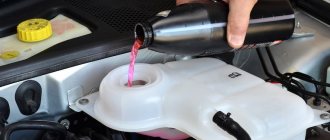With increasingly stringent environmental regulations, automakers are being forced to develop ways to make engines more environmentally friendly and efficient while maintaining performance. In this regard, forced induction systems have become widespread. Whereas in the past they were used to improve productivity, they are now used as a means of improving efficiency and environmental friendliness. Thanks to supercharging, it is possible to achieve the same performance as with naturally-aspirated engines, with fewer cylinders and a smaller volume. That is, supercharged engines are more efficient. Another method is the use of electrical energy, both individually (electric motors) and in combination with internal combustion engines (hybrid power plants). This article discusses electric turbines that combine these approaches.
General Features
Based on their energy source, non-electric forced induction systems are classified into turbochargers and superchargers. Electrical systems build on them and aim to improve transient performance and minimize lag.
A supercharger, according to Honeywell, is an electric motor-driven compressor that is installed on a supercharged engine. That is, this is an additional device for a turbo engine. An electric turbine is an analogue of a mechanical turbine. The drive in this case can be implemented in different ways.
According to the classification of researchers at the University of Wisconsin at Madison, forced induction electrical systems are differentiated by design and operating principle into the following types:
- electric blowers (EC/ET/ES);
- turbines with electric assist (EAT);
- electrically separated turbines (EST);
- turbines with additional electrically driven compressor (TEDC).
How to do cooling
When upgrading a car, it is imperative to install new elements in the cooling system. You will need a double-row copper radiator. It is used on VAZ-2110 cars. It works much better than other radiators.
Try to use a normal sized intercooler. If it is very large, then the problem of turbo lag will arise. This is the case when a long time passes between opening the throttle and building up boost pressure. But a very small intercooler will not be able to cool the air properly.
EAT
In EAT, a high-speed electric motor is mounted between the turbine and compressor, usually on a shaft. Due to the fact that it is not the main source of energy, low power electrical components are used. This results in low cost. In addition, such turbochargers have the ability to self-determine the rotor position and are characterized by good generating and motor capabilities. The main problem is the high temperature impact on the electric motor, especially if it is installed inside the housing.
There are various methods to solve it. For example, BMW installed clutches to allow the electric motor to be connected and disconnected from the shaft. Thanks to this, the motor can be placed outside the turbine. G+L inotec used a permanent magnet motor with a large air gap, which can also be located outside. The inner diameter of the stator is equal to the outer diameter of the compressor, and the outer diameter of the rotor is equal to the output diameter of the shaft. The air gap can serve as an air inlet channel. This provides benefits in terms of cooling, inertia and thermal effect. In addition, in terms of thermal stability and thermal regulation, induction electric motors with variable magnetic resistance and universal commutator motors are more preferable compared to a motor with surface permanent magnets.
In what cases is turbocharging equipment necessary?
Many car owners want to equip their car with a turbocharger to increase power characteristics. Modern cars, equipped with engines with a large number of horsepower, do not require such modernization.
Owners of domestic cars that are not particularly powerful are taking this step. It makes sense to equip a small car with a turbocharger. Even a slight increase in horsepower in their engines will be noticeable and will give them better acceleration, improving the dynamics of their performance. This will give you more confidence when overtaking other vehicles on highways.
EST
In EST, the turbine and compressor are not connected by a shaft, and each is equipped with an electric motor. This allows the compressor and turbine wheels to operate at different speeds. This design has similar advantages to ET, but unlike it, it is capable of generating energy. In addition, it has a lower temperature effect due to the separation of the compressor and turbine, as well as the absence of additional inertia from the turbine and its shaft. Separating the turbine and compressor is advantageous from a layout point of view, as it allows the air flow path to be optimized. However, this technology also requires a powerful electric motor, generator and inverters to meet the torque/inertia ratio, which comes at a cost.
What else is needed for tuning
Before installing a turbine on a VAZ, you need to decide how much total power you want to squeeze out of the engine. If you want to get more than 200 horses, then you need to find a block from Kalina. It is 2.3 mm higher than the standard one. You can use an engine block from a 10th family car, but this will significantly reduce power.
It is imperative to install the crankshaft from a Lada Kalina car. The diameter of the crank mechanism is 75.6 mm. Be sure to use and carve a notch in them, which will allow you to achieve the required degree of compression. It is recommended to contact a competent specialist to make these recesses, or to purchase ready-made products in tuning stores.
TEDC
TEDC is a mechanical turbine with an additional compressor driven by an electric motor. Based on the location of the compressor relative to the turbine, these systems are classified into upstream and downstream options (above and below the turbine, respectively). In general, they are characterized by significantly better responsiveness during transient processes at the “lower” levels due to the independence of the electric motor from the inertia of the turbine and shaft. Moreover, TEDC in the downward flow in this regard are superior to the options in the upward flow due to the fact that the latter have a large volume to maintain pressure. Another advantage of electric turbines of this type is the minimal differences from mechanical ones.
Turbocharger selection
You can make a turbine for a VAZ with your own hands, but this is a very difficult task, so it is better to overpay a little and purchase a ready-made unit at least on the secondary market. You need to pay attention to the fact that the small turbocharger only works at low and medium speeds.
As soon as the crankshaft speed increases, the turbine is switched off. Large turbochargers, on the contrary, operate only at high and medium speeds, but at low speeds they turn off. There are several popular models:
- TD05 made by Mitsubishi. The boost is set at 3 thousand rpm, allowing you to squeeze out 250-300 hp. With.
- TD04L manufactured by Subaru, boost installed at 3 thousand rpm, power 200-250 hp. With.
- IHI VF10 this turbocharger is significantly larger than the Subarov one, it allows you to squeeze out 250 horses or more.
There are many Chinese turbochargers, their quality is very poor, but the price is reasonable. The price of a turbine for a VAZ on the secondary market fluctuates within a very wide range - from 5,000 rubles to several tens of thousands.
EAT
In the EAT, at low speeds the electric motor provides additional torque to the compressor to increase boost pressure. At the “tops” it generates energy that can be transferred to storage. In addition, the electric motor can prevent the turbine from exceeding its speed limit. However, a high back pressure effect may occur, which compensates for the energy extracted from the exhaust gases.
Due to the possibility of generating electricity from exhaust gases, such turbochargers are called hybrid. On passenger cars, depending on the driving cycle, they can generate from several hundred W to kW. This allows you to replace the generator, saving fuel.
Turbine properties
The main task of the turbine is to increase the power of the machine's engine. Currently, there are many ways to increase engine power: chip tuning, installing zero-resistance filters, boring cylinders, polishing intake channels, using nitrous oxide. The most affordable and easiest way to increase engine power is a turbine for a car.
The job of turbocharging is to exhaust exhaust gases to the turbine wheel blades through the exhaust manifold. The turbine wheel is mounted on the same axis with a compression wheel, which pumps up high air pressure and supplies it to the engine intake manifold. These actions significantly increase engine power and reduce fuel consumption.
Design and functional differences
The fundamental differences between the considered forced induction electrical systems are combined by researchers at the University of Wisconsin at Madison in graphical and tabular form. The figure below shows diagrams of their design (a - EAT, b - EC, c - EST, d - upstream TEDC, e - downstream TEDC).
The table reflects the main provisions of the device. These include the energy source, the compressor drive, and the power of the electrical components. In addition, qualities such as dimensions and temperature effect are important.
| Type | E.C. | EAT | EST | TEDC |
| Energy source | Battery | Exhaust gases/battery | Exhaust gases/battery | Exhaust gases/battery |
| Electric motor and inverter power | High | Low | High | Low |
| Temperature effect | Short | High | Short | Short |
| Size | Small | Average | Big | Big |
| Electric turbine | No | Yes | Yes | No |
| Turbo-electric compressor drive | No | Yes | No | No |
Thus, electric turbines include EAT and EST technologies. EC, as noted, is a separate mechanism, TEDC is a conventional turbocharging system equipped with it.
We turn a naturally aspirated engine into a turbo with our own hands
All cars are the same. The difference is in the nuances. There are no fundamental differences in the acceleration of Zhiguli, Toyota or Volkswagen. I propose, as a theoretical “blank,” to take a simple cheap car and turn it into a Car. Let's start with the engine. The most effective solution for any naturally aspirated engine is turbocharging. I think this is the most effective way. And don't say it's difficult. Go.
DIY turbocharging
Given: VAZ-2106, 2112, …13, …15, “Kalina”, “Granta” and further down the list.
Engine: 1.6 l, 8 or 16 valves.
Advantages and disadvantages
Driving the turbine by an electric motor eliminates the main disadvantages of mechanical turbochargers.
- There is no lag, since the electric motor can provide a very high speed of rotation of the rotor.
- There is no turbo lag caused by a lack of exhaust gases, since in this case the lack of energy is compensated by the electric motor.
- The electric motor allows you to maintain boost during transient processes like anti-lag without the negative effects of the latter.
- This ensures a wide operating range and uniform torque.
- Some types of these mechanisms are capable of generating electricity, reducing the load on the generator and reducing fuel consumption.
- It is possible to recover lost energy, as Ferrari did in its Formula 1 engine.
- Electric turbines operate in more gentle conditions and at lower speeds (100 thousand instead of 200-300 thousand).
However, this technology has a number of disadvantages.
- Great complexity of the design, including an electric motor and controllers.
- This results in a high cost.
- In addition, the complexity of the design affects reliability.
- Due to the large number of structural elements (in addition to the turbine, this includes an electric motor, controllers, and battery), such turbochargers are much larger and heavier than conventional ones.
In addition, each type of electric turbine is characterized by specific features.
| Type | E.C. | EAT | EST | TEDC upstream | TEDC downstream |
| Advantages |
|
|
|
|
|
| Flaws |
|
|
|
|
|
In terms of durability, according to IHI, electric turbines will be equivalent to mechanical ones due to operation under the same conditions in a more gentle mode with greater design complexity.
Body problems
On cars of the 8th and 9th VAZ families, the TV is also a problem area. Domestic cars, especially Zhigulis, use rather thin metal. Unless, of course, these are the first six issues. Therefore, if you increase engine power, high loads will be applied to the body and the metal will begin to tear.
Moreover, it does not matter whether the body is in good or bad condition. Therefore, before tuning, it is necessary to install new body hardware. And replace all the metal that is in the engine compartment with something more durable. Only after all the work to improve the body has been completed can further improvements begin.
Relevance
Despite their good performance, electric turbines are currently not widely used in production vehicles. This is due to their high cost and complexity. In addition, improved versions of mechanical turbines (twin-scroll and variable geometry) have similar advantages over the initial modifications (albeit to a lesser extent) at a significantly lower cost. EST currently uses Ferrari in its Formula 1 engine. According to Honeywell, mass use of electric turbines will begin at the beginning of the next decade. It should be noted that electric superchargers are already used on some production cars, such as the Honda Clarity, as they are simpler.
Where does tuning begin?
If you purchased a car, especially a used one, the first thing you should pay attention to is the condition it is in. If you are well versed in its structure, you can completely disassemble it into small screws. Only in this case can you fully examine all the elements of the body and assess their condition. The main problem that most motorists face is the presence of rust. All elements of the body are susceptible to it, but especially the wings, bottom, and sills.
The simplest and homemade mechanisms
At the beginning of the decade, simple, cheap mechanisms similar to computer coolers, also called electric turbines, appeared on the market. They are located at the inlet and are battery operated. It is possible to use such electric turbines on both a carburetor and an injector. According to manufacturers, they increase the air flow entering the engine, accelerating it, which gives a performance increase of up to 15%. In this case, the parameters (revolutions, flow, power) are usually not indicated. It is very easy to install such electric turbines on a car with your own hands.
However, in reality their electric motors develop up to several hundred W, which is not enough to increase the flow volume, since this requires about 4 kW. Therefore, such a device will become a serious obstacle at the inlet, as a result of which productivity, on the contrary, will be reduced. At best, the losses from it will be small, which will not significantly affect the dynamics.
In addition, on the Internet you can find developments on creating an electric turbine with your own hands. Unlike the cheap options mentioned above, they are built on the basis of a centrifugal compressor and a brushless motor with a power of up to 17 kW and a voltage of 50-70 V, since only such a motor is capable of providing sufficient torque and speed to rotate the compressor. The engine must be equipped with a rotation speed controller. This system does not require an intercooler - a cold intake is sufficient for it. Installing an electric turbine of this type may require replacing the generator (90-100 A) and the battery (with a more capacious one with high current output). The rotation speed of the compressor is determined by the position of the throttle. Moreover, the dependence is not linear, but exponential.
It is advisable to create such electric turbines for cars with small engines with a volume of up to 1.5 liters, which is due to high energy consumption. Moreover, the larger the engine volume, the lower the boost pressure the supercharger can create. So, on a 0.7-liter engine it will be 0.4-0.5 bar, on a 1.5-liter engine - 0.2-0.3 bar. In addition, such a boost will not be able to function for a long time at maximum performance due to heating. However, the controller can be configured to force activation.
Due to the high cost of components, it is very expensive to make such an electric turbine. Reviews indicate a noticeable increase in productivity.
From a design point of view, these mechanisms, like the cheap options mentioned above, are classified as electric superchargers. However, they are often mistakenly called electric turbines. Nowadays the market offers more serious branded mechanisms that are close to homemade ones.
Turbine installation
Whether it is possible to install a turbine on a car depends on the specific car model. In some cases, it is easier to purchase a new car than to select spare parts. If you decide to do this, then find a good technician, because it’s quite difficult to handle the installation yourself.
The conversion process begins with the removal of all parts in the car related to the air intake and exhaust. The new turbo manifold is connected to the turbine, which is deployed so that work with connecting the pipes is simplified as much as possible.
The bearings of a turbine that rotates at high speed constantly need lubrication. The oil supply pipe is connected to the place in the engine where the oil comes under pressure.
You can also use the oil pressure sensor tee for connection. The other end of the tube is connected to the top of the turbine cartridge. The oil will drain under low pressure into the pan through a special nipple. The cooling system will be connected on the other side of the water pump.
As more air enters the engine, it will require more fuel. To increase its flow, more efficient nozzles are installed. It also wouldn't hurt to install a new fuel pump that matches the injectors. But whether to do this is decided on a case-by-case basis.
Excessive air pressure in the engine will be controlled electronically. Coolant and air temperature sensors are connected to it. The controller must be calibrated so that fuel is injected at exactly the right time based on the engine condition.
The firmware of the motor should be done by a specialist with extensive experience behind him. Otherwise, by changing the factory settings, you can render the engine inoperative, and then spend money on repairing it.
If a compressor is installed on the car, the setup will be much easier. You won't need so many additional parts. It will be able to work at low and high speeds.
In general, the conversion process is quite labor-intensive and requires skills. Accordingly, the price of the issue will be high. Whether you need this, decide for yourself. But with successful installation of the turbine, the dynamic characteristics of the car are significantly improved.
